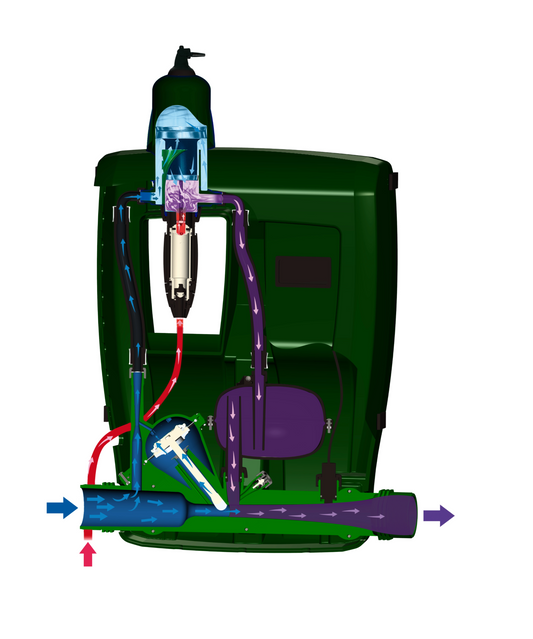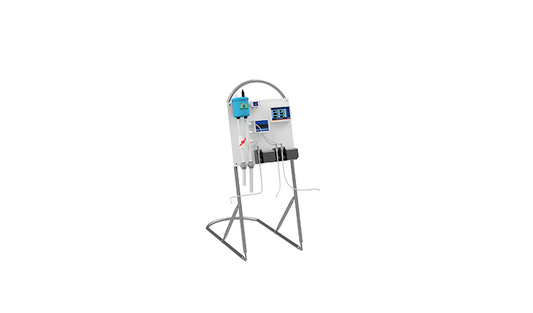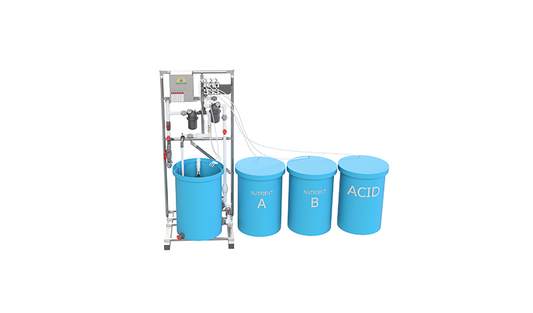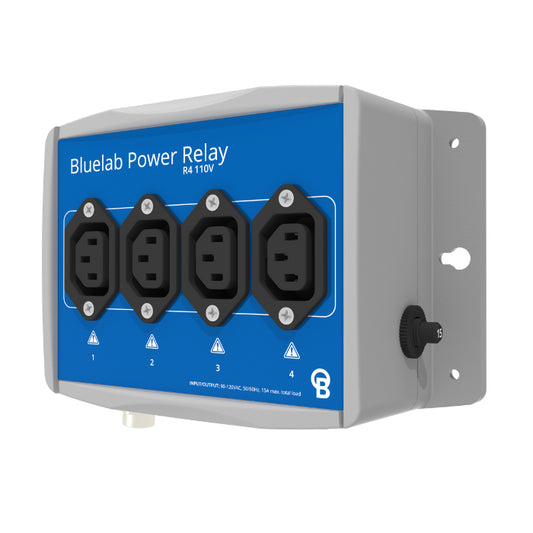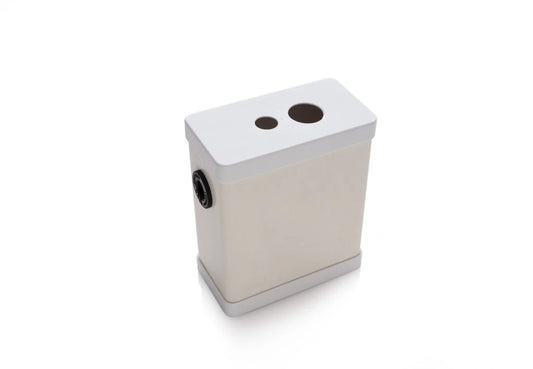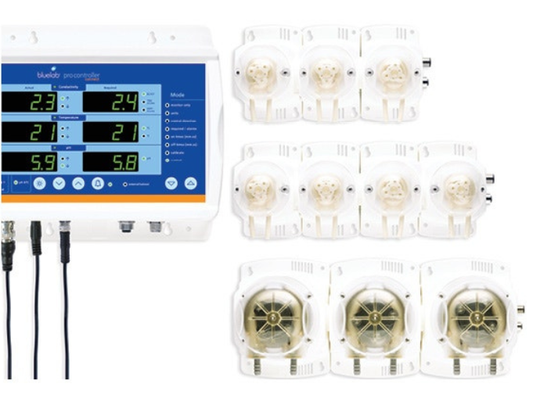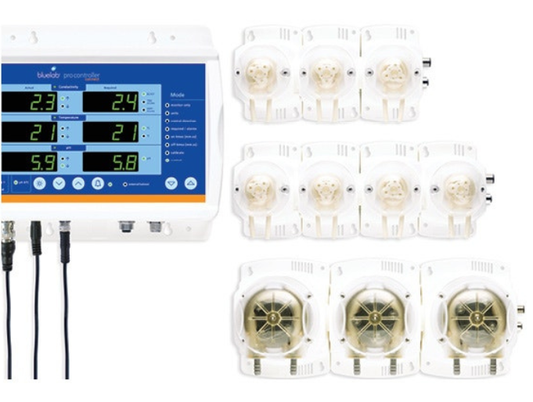Collection: Irrigation and Fertilization Automation
Elemental nutrient concentrations in empirical proportions in the water based culture solution, favourable pH, optimum temperatures, ample dissolved oxygen amounts and ideal humidity levels lead to successful crop cultivation and harvest.
Soil acts as a natural buffer. In a soilless culture the above parameters need to be continually regulated to maintain an environment suitable for plant growth.
Guidelines:
- Electrical conductivity EC is a measurement of the amount of ions in a hydroponic or fertigation solution.
Pure water has no electrical conductivity as it does not contain any dissolved substances. Mineral salts for plant nutrition dissolve in water to exist as ions carrying a positive or negative electrical charge. The electrical conductivity of the solution thus increases with added ions.
A high EC reading indicates a high concentration of salts in the solution. A low EC value shows a low salt concentration in the solution.
High EC readings cause nutrient toxicity in plants along with salt accumulation around the roots restricting water uptake;dilute the nutritive solution with water. Low EC readings cause nutrient deficiency; add more nutrients to the solution.
Most crops thrive at a conductivity factor, CF, of 2 to 3.5 mS/cm. Salt sensitive plants prefer to grow in solutions with EC values of 1 to 2.6 mS/cm. Heavy feeders need solution EC values of 2.6 to 4.6 mS/cm.
Start your seedlings at lower EC levels and gradually increase the strength of the nutrient solution as the young plants mature.
- pH stands for potential of hydrogen. pH denotes the concentration of hydrogen ions H+ in a solution.
pH is designated the range of 0 to 14 but very concentrated strong acids can have pH values less than 0 and very concentrated strong alkalis or bases can have pH values greater than 14.
Neutral solutions have a pH of 7 at 25°C. In pure water this specific condition signifies that the concentrations of H+ ions and OH− ions are equal.
Acidic solutions have a high concentration of H+ ions and pH values lower than 7 while alkaline solutions have a low concentration of H+ ions and pH values higher than 7.
pH directly impacts nutrient availability to plant roots where lower or higher pH values affects the solubility of different nutrients causing ions to bind into compounds or elements to be more soluble reaching toxic available amounts. This results in nutrient deficiencies and lower quality or loss of crops.
Because different essential nutrients are readily available at different pH values and plant nutritional needs largely vary, culture solution pH settings range from 4.0 to 8.0, highly specific to each plant species.
- Temperature of the hydroponic nutrient solution is kept at a constant ideal with a range of 59 °F to 86 °F or 15 °C to 30 °C distinctive to the plant variety cultivated.
Care should be taken to prevent rapid temperature changes and drastic differences in the root zone temperature compared to the room air temperature.
Subpar temperature affects the solubility of nutrients thereby decreasing nutrient availability and ease of absorption by plant roots. Root health and plant growth are impacted and plant stress may occur.
Optimum temperatures maintains high levels of dissolved oxygen, higher temperatures decrease the solubility of oxygen in water, crucial to respiration while increasing the rate of metabolical reactions in plants, an activity that uses up more of the declining oxygen amount available.
While the enriched plant feeding water used in hydroponics is both warmed and insulated in the winter and cooled in the summer, lower nutrient solution temperatures mitigate root rot and suppress plant diseases.
- Dissolved oxygen refers to the amount of oxygen present as a solute in the nutritious liquid. Oxygen in the solution is necessary for aerobic plant respiration which enables nutrient uptake and healthy root growth.
Low levels of oxygen available to roots is detrimental to plant development. High temperature is an antagonist to amount of dissolved oxygen in a solution.
Oxygen availability in solution should be kept at 6 to 10 ppm or 5 to 8 mg/L.
- Humidity points to the amount of water vapour present in the air. Vapour Pressure Deficit VPD indicates the difference between the current amount of moisture present in the air and the maximum amount of moisture the air can hold at a given temperature.
A high VPD means low humidity; relatively dry air, plants cannot absorb adequate moisture, a lot of moisture is pulled from the plants through excessive transpiration. Nutrient uptake is reduced leading to stunted plant growth.
A low VPD means high humidity; the air is close to saturation, is an ideal breeding environment for mold and fungus and the plant has difficulty transpiring resulting in root rot and hindered crop yields.
Optimal moisture levels in the hydroponic set up environment should be 50% to 70%, highly dependent on individual plant species at precise stages of development, and temperature differences between day and night kept at a minimal.
Set parameters specific to individual plant needs or for plants with similar affinities to be grown in the same hydroponic system.



